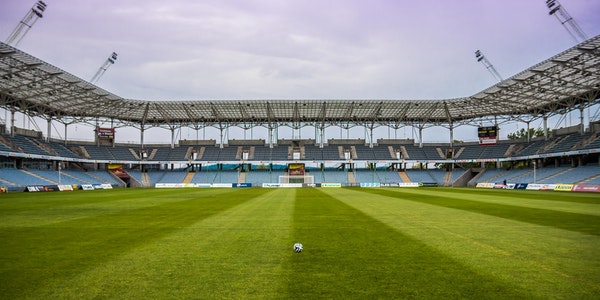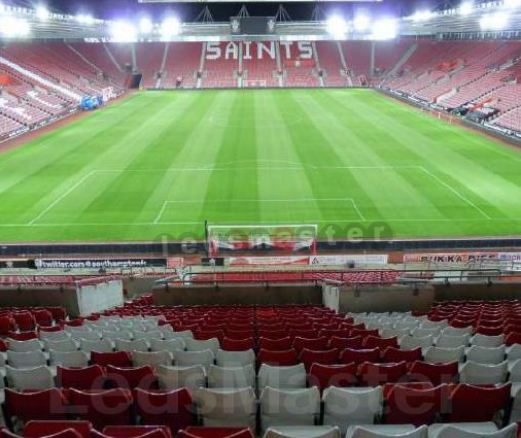Real-time status updates and alerts ensure that staff can respond promptly to evolving emergency situations.
(III) Benefits of Integration for Emergency Response
Improved Safety and Visibility:
Seamless integration ensures immediate activation of emergency lighting, providing clear visibility of exit routes and critical areas during evacuations.
Bright and uniform illumination reduces panic and enhances safety for attendees and emergency responders.
Enhanced Communication and Coordination:
Integration with PA systems enables the dissemination of critical information and instructions to attendees, facilitating orderly evacuations and response efforts.
Centralized control and monitoring streamline coordination between venue staff and emergency responders, optimizing response times and resource allocation.
Compliance and Preparedness:
Integrated systems ensure compliance with safety regulations and standards, such as NFPA 101 Life Safety Code, by providing reliable emergency lighting and communication capabilities.
Regular testing and maintenance of integrated systems help ensure readiness for emergencies and enhance overall venue preparedness.
(IV) Implementation Considerations
System Compatibility and Interoperability:
Integration requires compatibility between LED lighting fixtures, emergency power sources, and communication systems to ensure seamless operation.
Interoperable protocols and standards, such as DALI (Digital Addressable Lighting Interface) and BACnet, facilitate communication between different components of the integrated system.
Training and Protocol Development:
Training programs should be implemented to familiarize venue staff with emergency procedures and the operation of integrated systems.
Clear protocols and procedures for system activation, monitoring, and response should be developed and regularly reviewed.
(V) Case Studies and Best Practices
Professional Sports Venues:
Many modern sports venues have successfully implemented integrated LED lighting and emergency systems, enhancing safety and response capabilities.
Best practices include comprehensive system testing, staff training, and collaboration with emergency responders to ensure effective emergency preparedness. (VI) Conclusion
(VI) Conclusion
Integration of LED sports lighting with emergency systems enhances safety and response capabilities in sports venues by enabling automated activation, improving communication, and facilitating coordinated emergency response efforts. Seamless integration ensures compliance with safety regulations, enhances venue preparedness, and provides attendees with confidence in their safety during events. As sports venues continue to prioritize safety and emergency preparedness, integrated LED lighting systems will play a vital role in ensuring the safety and well-being of attendees and staff alike.
C. Compliance with Safety Standards
1. Meeting regulatory requirements
(I) Understanding Regulatory Requirements
Regulatory Landscape:
Compliance with local, national, and international regulations is essential for ensuring the safety and functionality of sports lighting systems.
Regulations may cover aspects such as lighting quality, energy efficiency, environmental impact, and emergency preparedness.
Key Regulatory Bodies:
Local building codes and regulations set by municipal authorities govern construction and lighting standards for sports venues.
National regulatory agencies, such as the Occupational Safety and Health Administration (OSHA) in the United States, may establish guidelines for workplace safety, including lighting requirements.
International organizations like the International Electrotechnical Commission (IEC) and the International Organization for Standardization (ISO) provide standards and guidelines applicable worldwide.
(II) Compliance Considerations for LED Sports Lighting
Lighting Quality Standards:
Regulations may specify minimum lighting levels, uniformity requirements, glare limitations, and color rendering standards to ensure adequate visibility and safety for players and spectators.
LED lighting systems should meet or exceed these standards while providing energy-efficient illumination.
Energy Efficiency Regulations:
Many regions have energy efficiency standards and mandates aimed at reducing electricity consumption and environmental impact.
LED sports lighting, known for its energy efficiency, helps venues meet these requirements by reducing energy consumption and operating costs.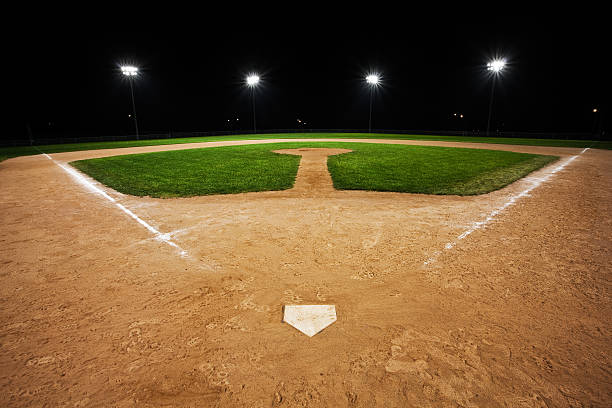 Environmental Impact Regulations:
Environmental Impact Regulations:
Regulations may address light pollution, wildlife disruption, and energy waste associated with outdoor lighting installations.
LED lighting’s directional illumination, precise control, and reduced light spillage can help mitigate these environmental concerns, aligning with regulatory goals.
Emergency Lighting Requirements:
Emergency lighting regulations mandate the provision of backup lighting systems for safe evacuation during power outages or emergencies.
LED sports lighting systems can integrate emergency lighting features to ensure compliance with these regulations, providing reliable illumination when needed.
(III) Strategies for Compliance
Product Certification:
Select LED lighting fixtures that comply with relevant safety and performance standards, such as UL (Underwriters Laboratories) certification in the United States or CE marking in the European Union.
Ensure that lighting manufacturers provide documentation demonstrating compliance with regulatory requirements.
Consultation with Experts:
Engage lighting designers, engineers, and consultants with expertise in sports lighting and regulatory compliance to assess design plans and ensure adherence to relevant standards.
Seek guidance from regulatory agencies or local authorities to interpret and apply specific requirements effectively.
Regular Maintenance and Testing:
Implement a routine maintenance schedule to ensure that lighting systems remain in compliance with regulations over time.
Conduct periodic testing of emergency lighting features and document results to demonstrate ongoing compliance with safety requirements.
(IV) Case Studies and Examples
Professional Sports Venues:
Many professional sports stadiums and arenas have successfully implemented LED lighting solutions that meet regulatory requirements while enhancing performance and energy efficiency.
Case studies highlighting compliance strategies and best practices can provide valuable insights for other venues seeking to upgrade their lighting systems.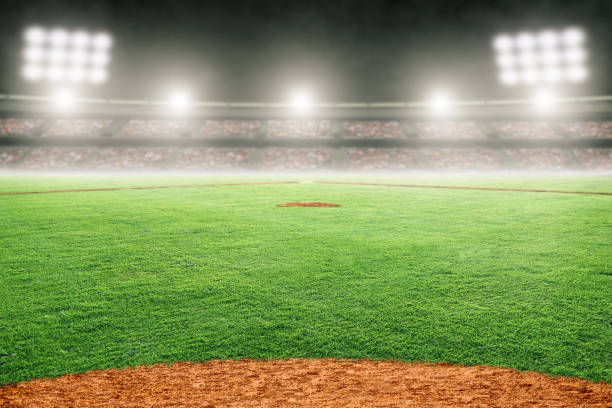 (V) Conclusion
(V) Conclusion
Meeting regulatory requirements with LED sports lighting involves understanding and addressing a range of standards related to lighting quality, energy efficiency, environmental impact, and emergency preparedness. By selecting compliant lighting fixtures, consulting with experts, and implementing effective maintenance and testing procedures, sports venues can ensure that their lighting systems meet regulatory standards while providing optimal illumination for players, spectators, and staff. As the adoption of LED lighting continues to grow in the sports industry, ensuring compliance with regulatory requirements remains a critical aspect of lighting design and implementation.
2. Case studies of safety improvements in sports facilities
(I) Introduction
Safety is paramount in sports facilities, and improvements in lighting technology play a crucial role in enhancing both player and spectator safety. Let’s explore case studies showcasing how sports venues have achieved notable safety improvements through upgrades to their lighting systems.
(II) Case Study 1: The Allianz Arena, Munich, Germany
Background:
The Allianz Arena is a world-renowned football stadium and home to FC Bayern Munich.
Seeking to enhance safety and visibility during matches and events, the stadium underwent a comprehensive lighting upgrade.
Safety Improvements:
Installation of LED sports lighting: The stadium replaced its traditional lighting with state-of-the-art LED fixtures, providing brighter and more uniform illumination.
Enhanced glare control: LED fixtures were equipped with anti-glare technology to reduce visual discomfort for players and spectators.
Emergency lighting integration: LED lighting systems were integrated with emergency backup systems to ensure continuous illumination during power outages or emergencies, improving evacuation safety.
Outcomes:
Improved visibility: The new LED lighting system significantly enhanced visibility on the pitch, reducing the risk of player collisions and injuries.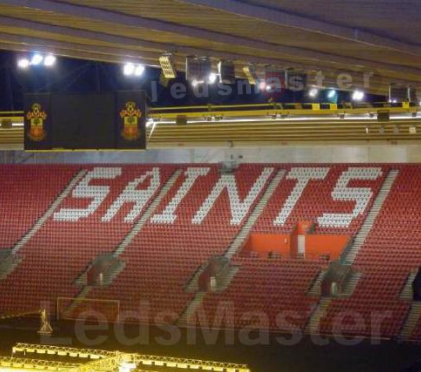 Enhanced spectator experience: Brighter and more uniform lighting improved the viewing experience for spectators, contributing to overall satisfaction and safety in the stadium.
Enhanced spectator experience: Brighter and more uniform lighting improved the viewing experience for spectators, contributing to overall satisfaction and safety in the stadium.
Compliance with safety regulations: The stadium’s lighting upgrade ensured compliance with safety standards and regulations, further enhancing its reputation as a safe and modern sports venue.
(III) Case Study 2: Wimbledon Tennis Championships, London, United Kingdom
- Background:
The Wimbledon Tennis Championships, one of the most prestigious tennis tournaments globally, prioritizes player safety and performance.
To maintain high safety standards and optimize playing conditions, the tournament organizers implemented a lighting enhancement project.
- Safety Improvements:
Transition to LED court lighting: The tournament replaced traditional court lighting with advanced LED systems, offering superior brightness and color rendering.
Flicker-free technology: LED fixtures were selected for their flicker-free operation, reducing eye strain and enhancing player focus and safety during matches.
Emergency preparedness: LED lighting systems were integrated with emergency lighting features to ensure uninterrupted play and safe evacuation in case of emergencies.
- Outcomes:
Enhanced visibility and player safety: The upgraded LED lighting provided optimal visibility on the courts, minimizing the risk of injuries due to poor lighting conditions.
Improved performance: Players reported better visibility of the ball and improved focus during matches, leading to higher-quality gameplay and reduced injury incidents.
Positive feedback from stakeholders: Tournament organizers, players, and spectators praised the lighting improvements for enhancing safety, performance, and overall experience at Wimbledon.
(IV) Conclusion
These case studies demonstrate how sports facilities worldwide have achieved significant safety improvements through the adoption of advanced LED lighting technology. By prioritizing factors such as brightness, glare control, and emergency preparedness, these venues have enhanced player safety, optimized viewing experiences, and ensured compliance with safety regulations. As the sports industry continues to embrace innovative lighting solutions, the focus on safety remains a cornerstone of venue design and management, ensuring that athletes and spectators can enjoy sports events in a safe and secure environment.
VI. Case Studies and Real-World Examples
A. Professional Sports Arenas
1. Implementation and outcomes
Let’s delve deeper into the implementation process and the outcomes achieved through the adoption of LED sports lighting in these case studies.
Case Study 1: The Allianz Arena, Munich, Germany
Implementation Process:
- Assessment and Planning:
The stadium conducted a thorough assessment of its existing lighting system, identifying areas for improvement in safety and visibility.
Lighting designers collaborated with stadium management to develop a comprehensive plan for upgrading to LED sports lighting.
- Procurement and Installation:
LED lighting fixtures were sourced from reputable manufacturers known for their quality, performance, and compliance with safety standards.
Experienced contractors were hired to install the new lighting system, ensuring proper positioning, alignment, and integration with existing infrastructure.
- Testing and Commissioning:
The installed LED lighting system underwent rigorous testing to verify performance, including brightness, uniformity, glare control, and emergency functionality.
Final adjustments were made to optimize lighting settings and ensure compliance with safety regulations before commissioning the system for regular use.
Outcomes:
- Improved Visibility and Safety:
The implementation of LED sports lighting significantly enhanced visibility on the pitch, reducing shadows, glare, and uneven lighting.
Players reported improved visibility of the ball and surroundings, leading to a reduction in on-field collisions and injuries.
- Enhanced Spectator Experience:
Spectators enjoyed a better viewing experience with brighter and more uniform lighting, allowing them to follow the action on the pitch more clearly.
The stadium’s reputation as a modern and safe venue was bolstered, attracting more fans and revenue-generating opportunities.
- Operational Efficiency:
LED lighting’s energy efficiency and longevity resulted in reduced operating costs and maintenance requirements for the stadium, providing long-term savings.
Integration with emergency lighting systems ensured uninterrupted operation during power outages or emergencies, enhancing overall operational resilience.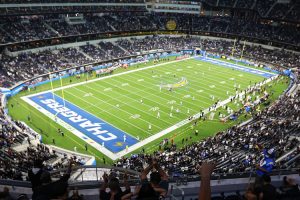 Case Study 2: Wimbledon Tennis Championships, London, United Kingdom
Case Study 2: Wimbledon Tennis Championships, London, United Kingdom
Implementation Process:
- Consultation and Design:
Tournament organizers consulted with lighting experts to identify the specific lighting requirements for tennis courts and ensure compliance with safety standards.
Detailed lighting designs were developed to optimize visibility, minimize glare, and enhance player performance during matches.
- Technology Selection:
LED lighting fixtures were selected based on their superior performance, including high brightness, color accuracy, and flicker-free operation.
Fixtures with adjustable settings were chosen to allow customization of lighting levels and color temperature according to different match conditions.
- Installation and Integration:
Professional installers were enlisted to install the LED lighting systems on tennis courts, ensuring precise positioning and alignment for optimal lighting coverage.
Integration with existing infrastructure, including power systems and emergency lighting, was carefully coordinated to ensure seamless operation.
Outcomes:
- Optimized Playing Conditions:
The implementation of LED court lighting resulted in consistently bright and uniform illumination, enhancing visibility and reducing shadows on the playing surface.
Players reported improved ball tracking and better depth perception, leading to enhanced performance and fewer errors during matches.
- Enhanced Safety and Emergency Preparedness:
LED lighting’s reliability and instant activation capabilities ensured uninterrupted play and safe evacuation procedures during emergencies.
Tournament organizers met regulatory requirements for emergency lighting and demonstrated a commitment to player and spectator safety.
- Positive Feedback and Reputation Enhancement:
Players, officials, and spectators praised the improvements in lighting quality, acknowledging the positive impact on the overall tennis experience.
Wimbledon reinforced its reputation as a premier tennis venue committed to providing world-class facilities and ensuring the safety and satisfaction of all stakeholders.
Conclusion:
In both case studies, the implementation of LED sports lighting resulted in tangible outcomes, including improved visibility, enhanced safety, operational efficiency, and positive feedback from stakeholders. By prioritizing factors such as lighting quality, glare control, and emergency preparedness, these sports facilities not only met regulatory requirements but also elevated the overall experience for players and spectators alike. The successful adoption of LED lighting technology underscores its importance in modern sports venue design and management, setting a benchmark for safety, performance, and innovation in the industry.
(To Be Continued)

